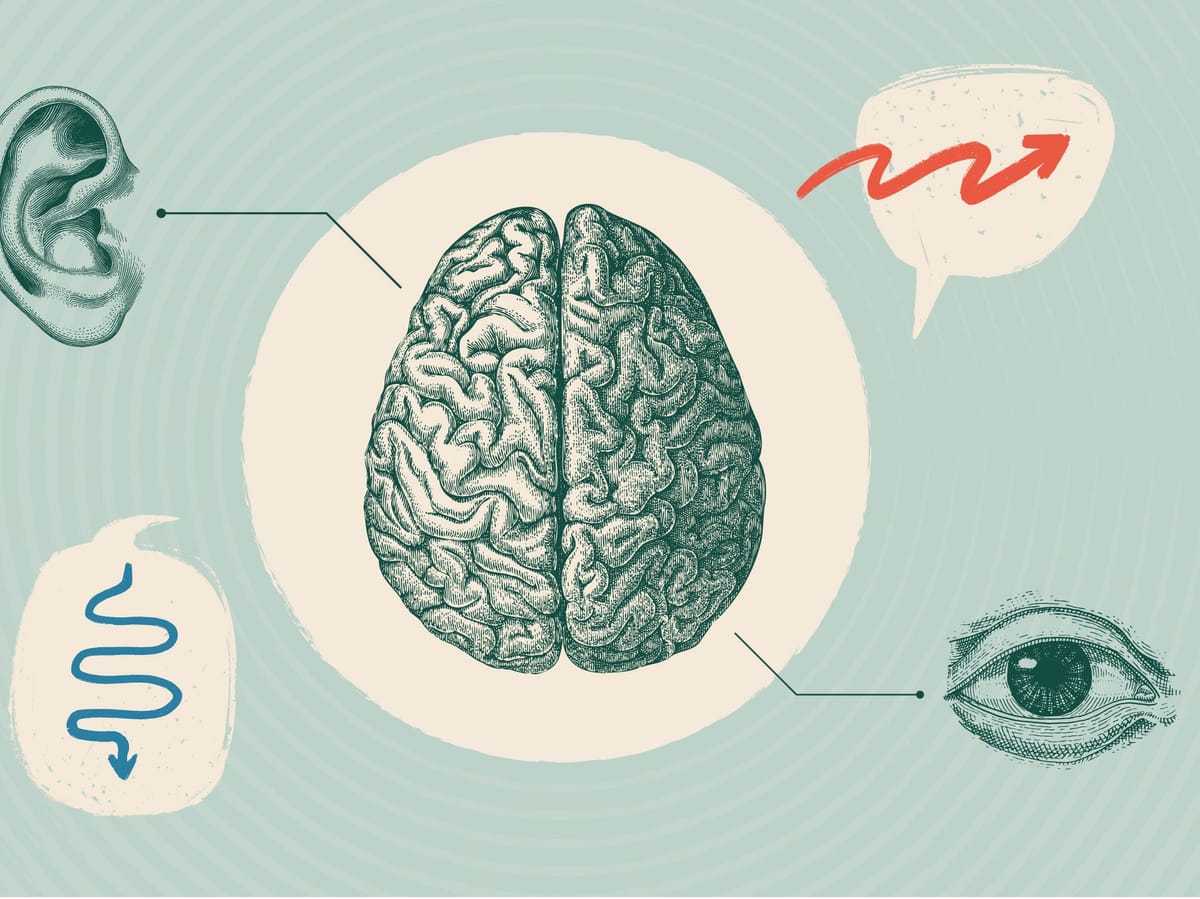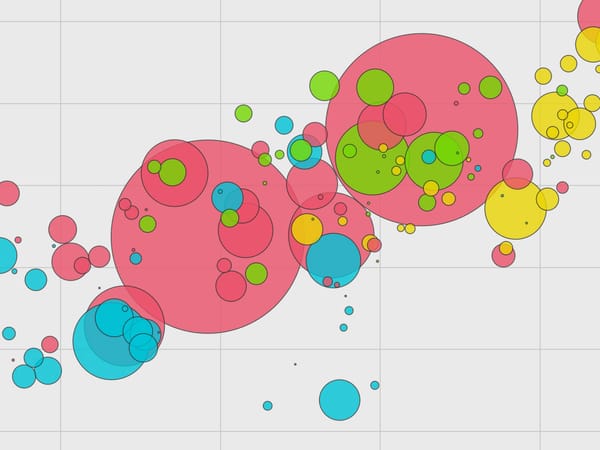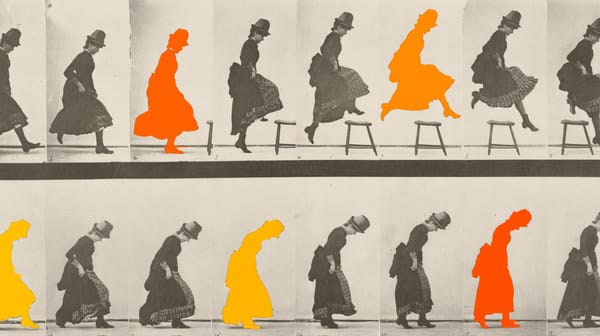Think Again
Reassessing the world’s most popular design framework

Hi everyone,
I come to my work in a design studio from a non-design background. So I watched with interest as people debated Rebecca Ackermann’s recent MIT Technology Review article on design thinking. The phrase has been around for nearly three quarters of a century, but was popularized—and codified into a specific process—in the early 1990s by the San Francisco–based design agency IDEO. Since then, businesses around the world have used this toolkit to develop untold numbers of products. And, as its popularity grew, advocates sought to apply it to a wider range of problems—problems that, many argue, it’s not meant (or even able) to solve.
The conversation about the value of design thinking comes into view every few years. The past month’s spate of commentary prompted me to wonder what my boss, Frontier founder Paddy Harrington, would have to say about it. So I asked him. Below you’ll find his take on design thinking’s strengths and weaknesses, informed by two decades in the industry, followed by a few thoughts of my own.
Love all ways,
Brian
We Are All Design Thinkers
Rebecca Ackermann’s article begins by describing Kyle Cornforth’s experience of a design workshop to reimagine school lunches. At first she was excited at all the apparent thinking and ideas, but when she looked more closely, “I was like, ‘You didn’t talk to anyone who works in a school, did you?’” The article goes on to describe the many and varied failures of design thinking as a practice, how it has not lived up to its initial promise.
I remember having a conversation over ten years ago with Bruce Mau on this same subject. At that point, not even fifteen years into the era of design thinking, another article was claiming that design thinking was dead. Bruce joked that maybe it had SIDS.
Kyle’s response was not a rejection of design thinking. It was a rejection of bad design thinking. Others, like Jake Knapp, felt the power of the practice while working at Microsoft. In that context, design thinking is aligned with how Enrique Allen describes it: “Facilitating the exchange of information, ideas, and research with product, engineering, and design teams more fluidly.”
When design thinking goes wrong, it can go way off track. Its power, its potential, is in bringing people together in productive and meaningful ways to make real progress on multifaceted problems. When it falls apart, everyone leaves the room and continues doing what they do in the way they’ve always done it.
Ultimately, good design thinking is about listening and responding creatively. It’s about listening to how the people you are working with respond to your creative response, then improving it.
But when it goes well and is done in the right context, with the right talent, it’s powerful.
In fact, the best projects treat the dynamic among the various stakeholders as part of the design challenge itself. People need to feel heard. If you start a process without time to listen, you are needlessly hobbling yourself. The difference between a meeting with people who have been consulted beforehand and one where they have not is the difference between actionable results and fruitless debate.
That’s not to say that design thinking can solve every challenge or fits every situation. Large corporate environments are particularly averse to what design thinking does best: focused problem-solving. Distributed teams with distributed agendas are generally not motivated to solve problems outside their own criteria for success. It’s not impossible, but it’s very difficult and needs a rare kind of leadership.
Design is about bringing new things into existence. It’s about our relationship with the unknown. And public markets hate that. The market rewards growth and predictability.
Design thinking is about imagination and possibility. There is no way to guarantee breakthrough innovation or the next revolutionary product. And that’s why design companies—and the idea of design’s value—have been often relegated to the sidelines. It’s why the world’s largest design company (IDEO) only employs about seven hundred people. You can’t neatly package it. Like life, design thinking is messy. And that’s ok.
It’s particularly irritating when writers take shots at Post-Its, an easy target for the vapid version of design thinking. It’s too easy a target. Picking on Post-It notes is like picking on pencils. They’re just tools.
And that’s the point. Design thinking is not inherently flawed. Bad design thinking is flawed. Bad medical practices are flawed. Bad law practices are flawed. Bad business practices are flawed.
Our world remains dominated by the quantifiable. The biggest businesses succeed because they manage to make the world more predictable. And that has led to a siloed mindset where many corporations act independent of their social and environmental context. It’s put us where we are now. Design thinking is part of the way out. It’s a way to manage our relationship with possibility and potential. It’s a structured approach to finding new and better ways of doing things. It’s about imagining how things can be better.
The article ends by noting: “Almost two decades after design thinking rose to prominence, the world still has no shortage of problems that need addressing. Design leadership and design processes themselves need to evolve beyond design thinking, and that’s an arena where designers may actually be uniquely skilled.”
We need good design thinkers more than ever. We need non-designer advocates for the power of design, like Roger Martin, to help us create the right frameworks for understanding what design thinking, when done right, can do.
And we need to stop thinking design will solve everything. No considerate person ever thought it would.
But it is the closest thing we have to a formal methodology for fighting the overwhelming force and circular logic of new liberalism and globalization. It’s a window into a more connected and expansive way of being in the world. What is perhaps most troubling about the article is the inference that design thinking is a singular practice with a clearly identifiable canon dictated by IDEOs of the world.
Paul Hawken’s Blessed Unrest (buy at Bookshop or Indigo) argues that we are living in the most powerful movement in all of human history, with millions of organizations working on the biggest challenges we face as society. But there is no centralized leader, catchy slogan, or preferred methodology. It’s deeply distributed. This is incredibly exciting and hard to comprehend.
The best progress is at the edges. It’s Indigenous design practices that embrace holistic design methodologies and account for the ways of relating, knowing, and being that support a healthier social and environmental existence for all of life. Think of architectural practices like Two Row Architect, near Toronto, or Comunal, in Mexico City, which listen carefully to the people they are serving to find novel and contextual solutions. It’s the Shorefast Foundation helping community economies become self-sufficient and providing frameworks that bring transparency to production processes.
Design thinking did not go wrong, it got evenly distributed.

Starting from Humble Origins
In the realm of business, intellectual frameworks rarely last longer than a generation. So it’s not surprising that design thinking, as promulgated by IDEO since the early 1990s, is showing the signs of its aging. Rebecca Ackermann’s article makes many good points about its limitations. By popularizing the term and a related step-by-step process, then suggesting that process could be universally applicable, IDEO simultaneously accelerated its growth and guaranteed it would crash head-first into those limits. But design thinking is not the only practice or methodology that, to survive as a valuable tool, will have to correct for its biases and blind spots. Nearly everyone engaged in or theorizing capitalist enterprises is grappling with something similar. The hole at the center of the article is a more nuanced explanation of the “updated principles” that IDEO and the Stanford d.school are creating.
The hints included in the article—for example, adding focuses on care and capabilities—suggest that the framework’s creators properly understand the challenge. But as Ackermann makes clear—and Maggie Gram’s more historically informed 2019 essay confirms—IDEO and related design-service providers are now trying to solve what theorist Horst Rittel identified, half a century ago, as “wicked problems.” They are intrinsically social, their solutions are defined differently by different actors, and there is always a deeper level you can explore.
This is why such problems have historically been the province of the nonprofit and civic realms. There is no easy money to be made in intractable, long-term challenges like encouraging public-school students to choose healthier options in their cafeteria or making an entire city like Gainesville, FL, more “competitive” and equitable. Ackermann repeatedly points at this fact: “with hindsight,” she says of the San Francisco Unified School District cafeteria project, “it’s clear that only after IDEO left the project did the real work begin.”
At the same time, Angela McKee Brown, the administrator hired to implement IDEO’s recommendations at SFUSD, says, “The biggest role that process played for us was it told a story that showed people the value of the work.” The shot of energy that came from IDEO’s process helped enable change that otherwise would have gotten mired in bureaucratic inertia. “We help nudge you out of ruts” isn’t a sexy story, but it’s something. And in 2023, Western societies certainly seem stuck in a lot of ruts.
Interestingly for me, as a writer and editor working inside a design studio, “IDEO has also been building new design capabilities within its own team, hiring writers and filmmakers to tell stories for their clients, which [IDEO co-chair Tim] Brown has come to see as ‘the key activity, not a key activity’ for influencing change in societal systems.” Let’s hope one of the first stories the company gets right is a more humble and honest accounting of what design thinking is and does. Then we can use it as a tool to help us with the real work.
🔗 Good links (audiovisual edition)
- 🌀 “This is like the blue/gold dress controversy, except … on fire.” The final Everything Is a Remix video by Kirby Ferguson, on “the first battleground of the AI era: art.”
- 🧂 A beautiful, saddening six-minute documentary about the changing Great Salt Lake, narrated by a biologist who studies it
- 🧠 An hourlong podcast interview with Roam Research founder Conor White-Sullivan about collective intelligence and bending your software to your own needs
- ✍🏻 An absolutely charming podcast conversation with Katherine Rundell, author of children’s books, essays on unusual animals, and a prize-winning new biography of poet John Donne





